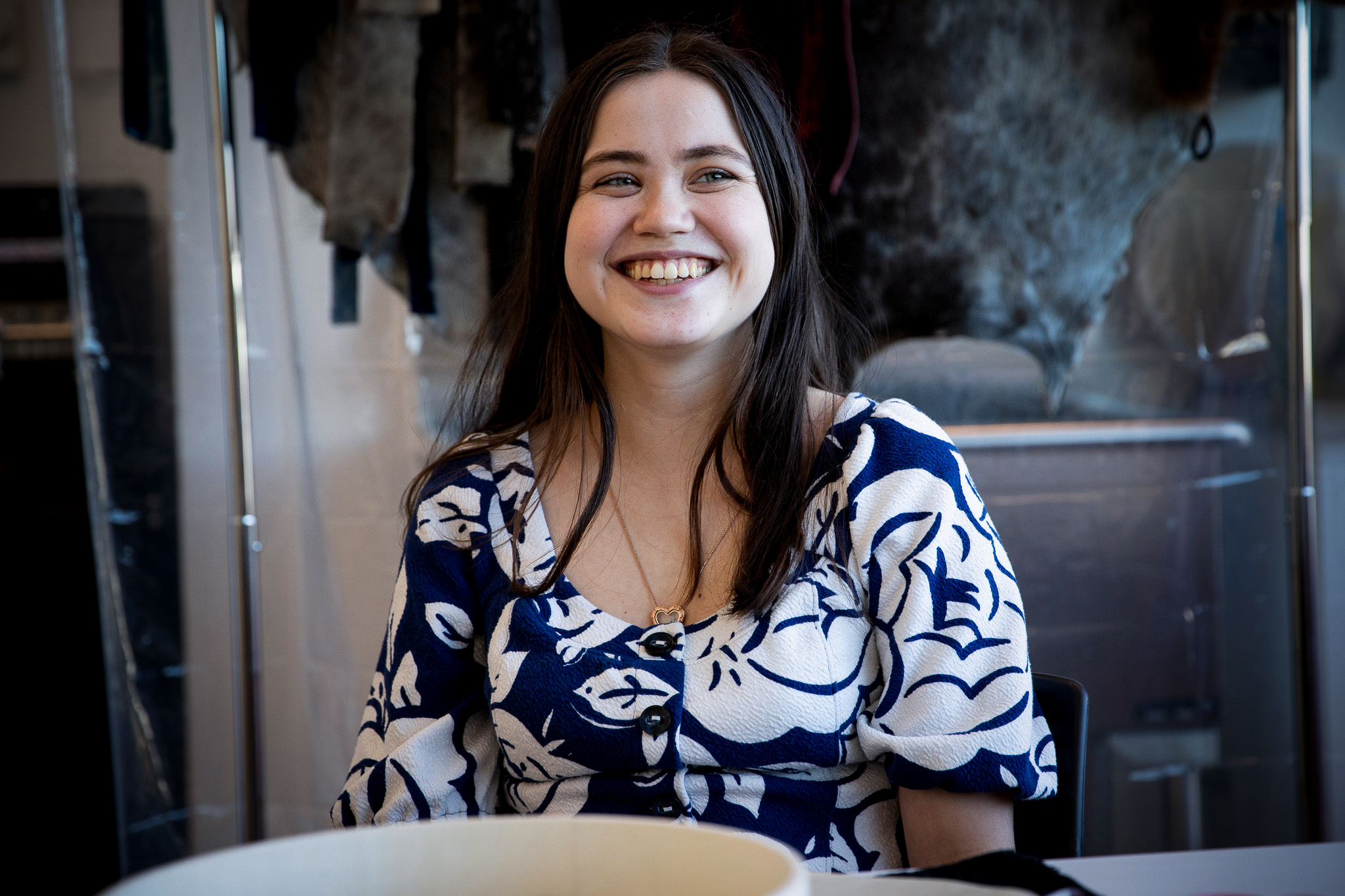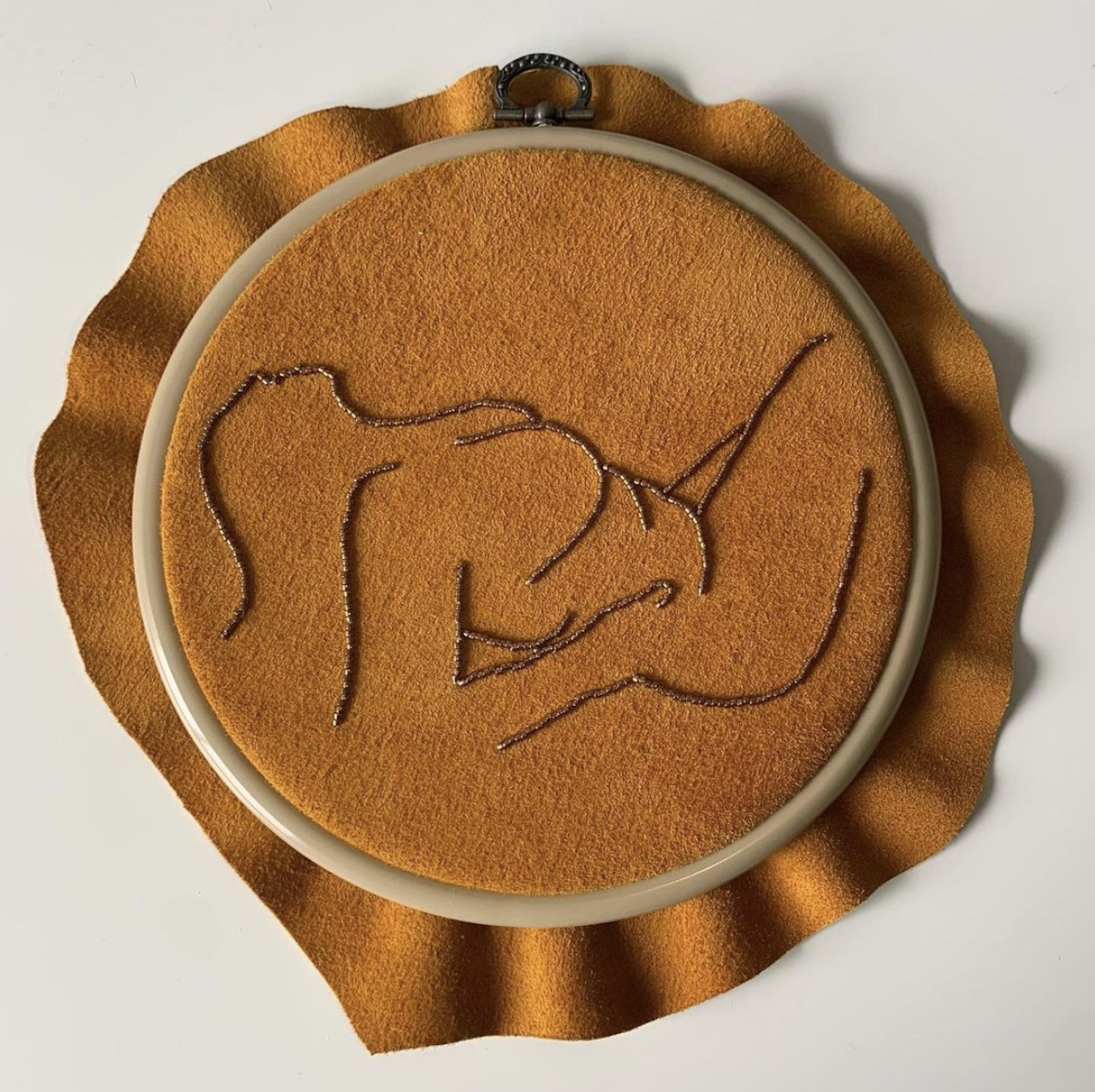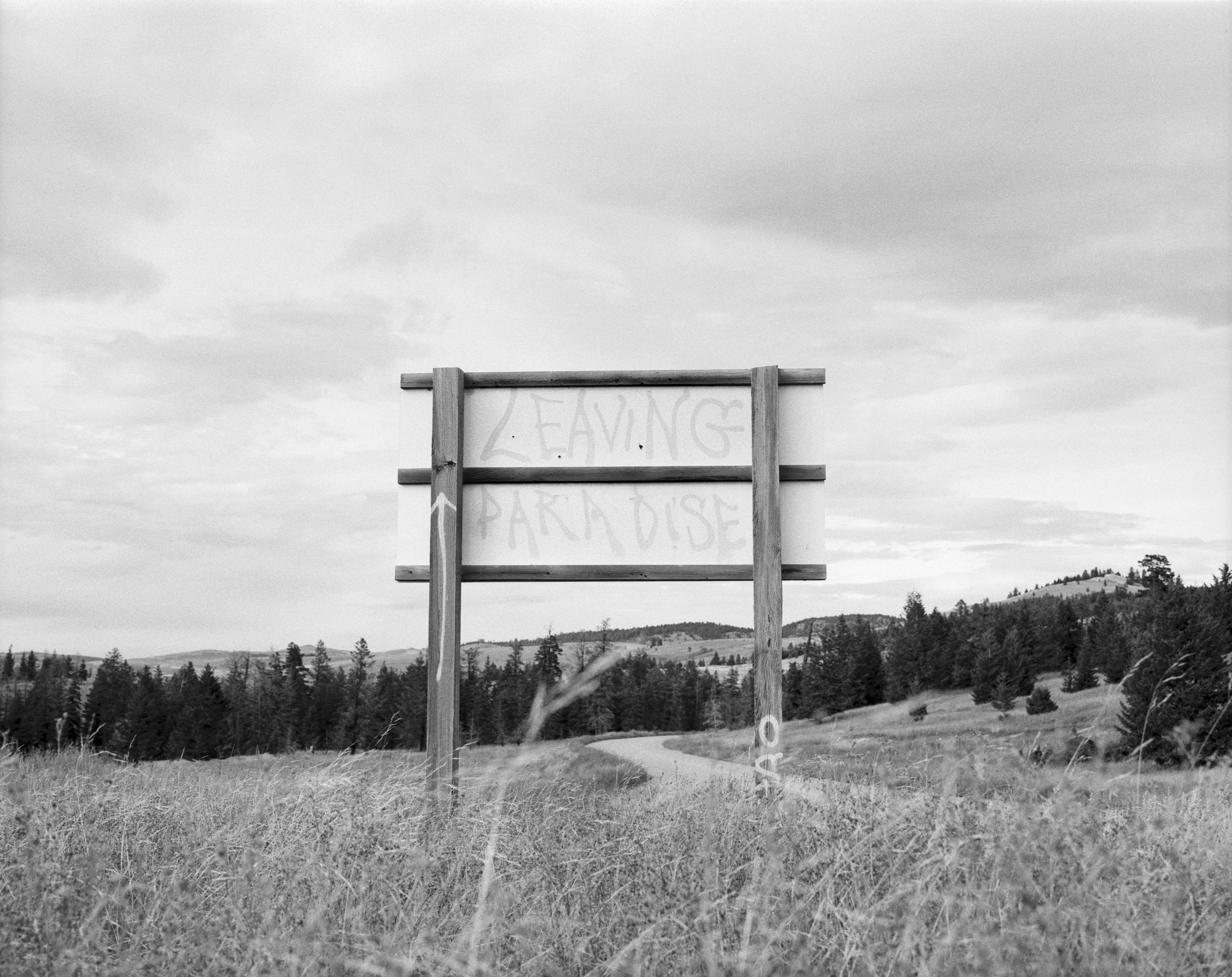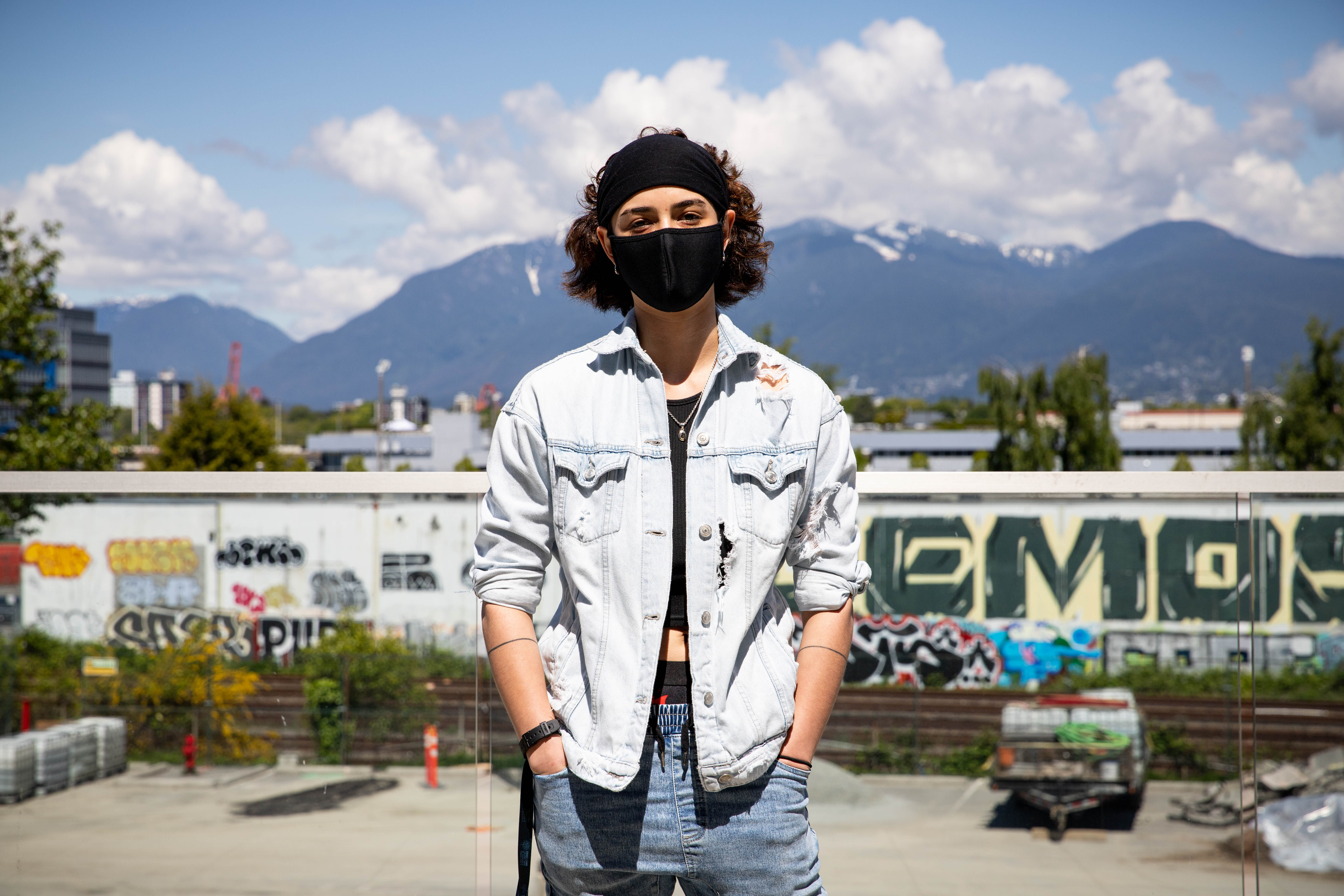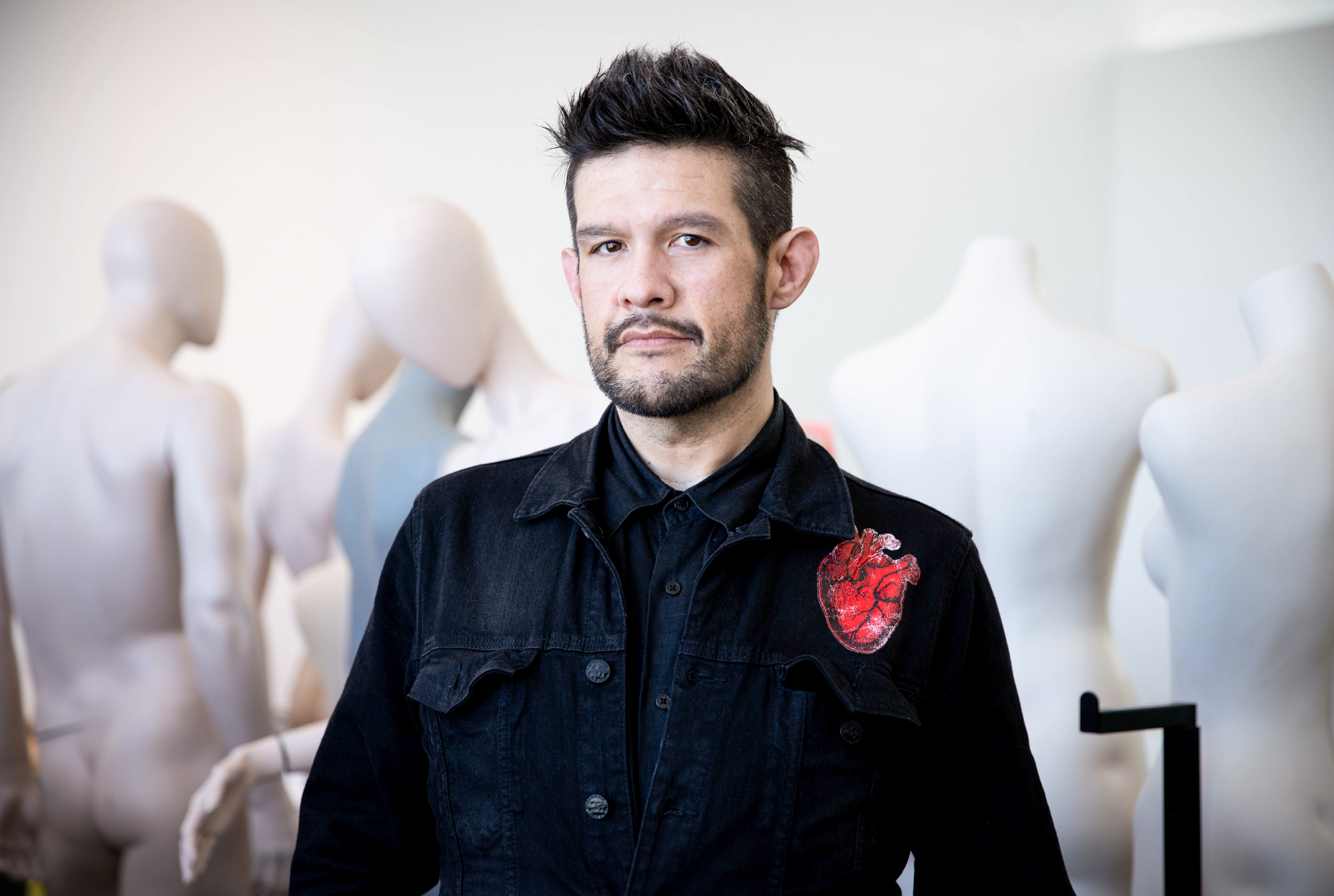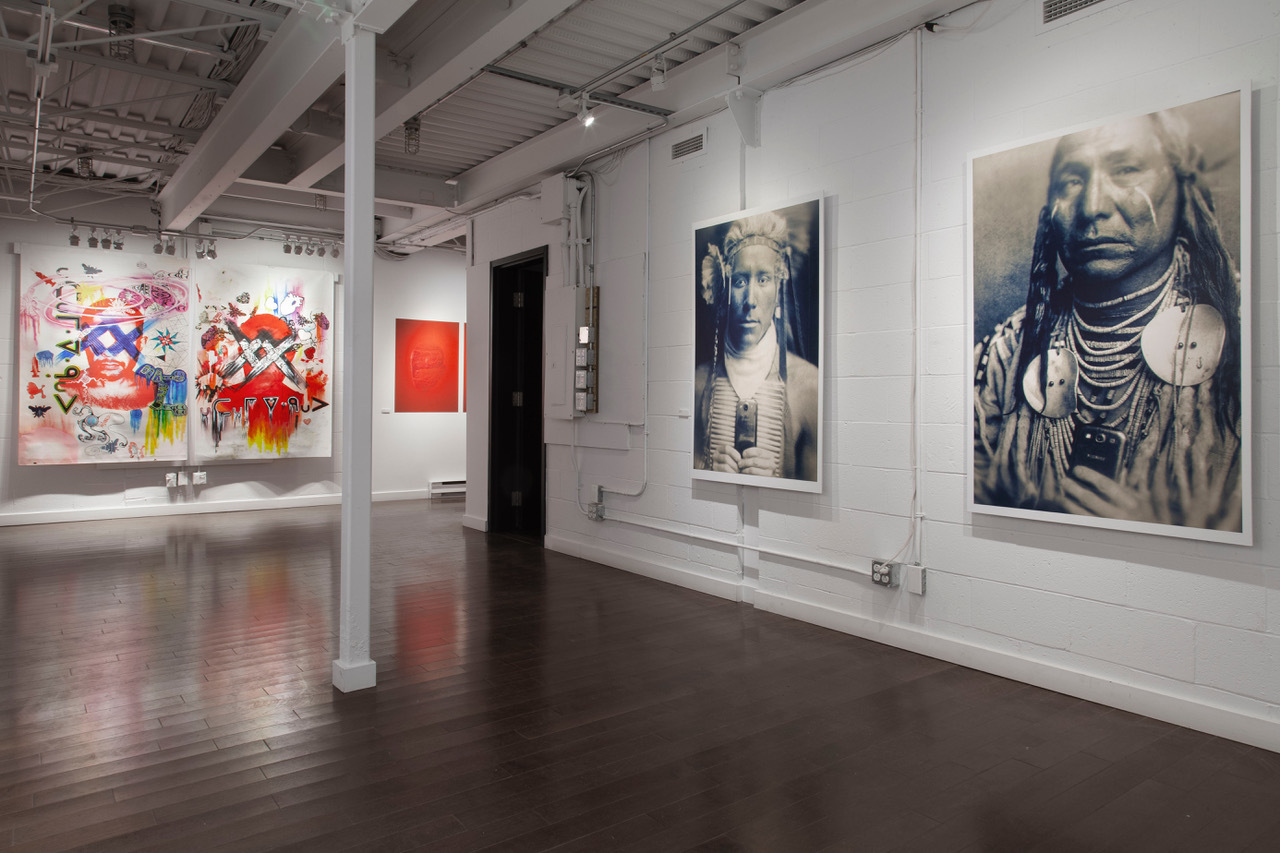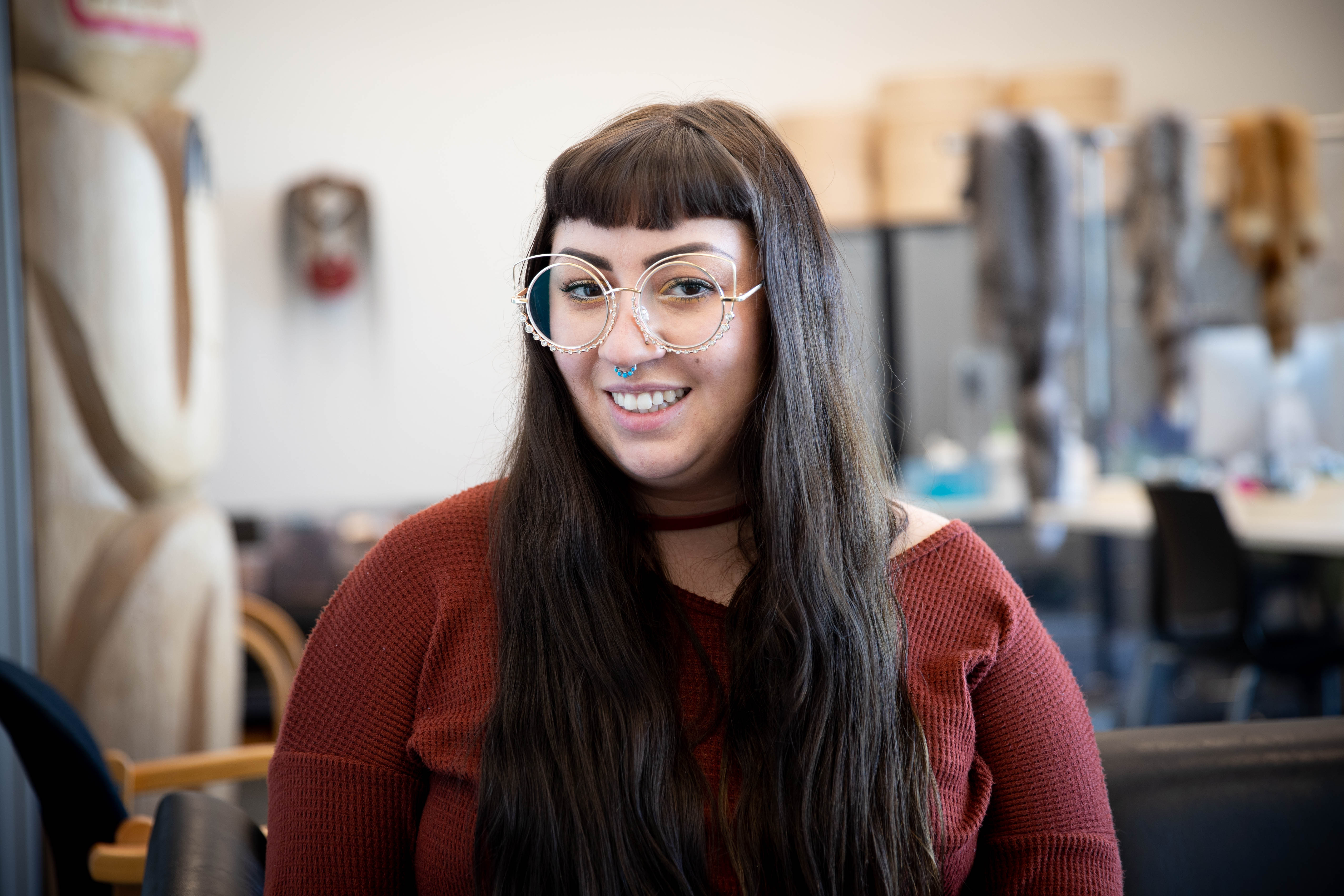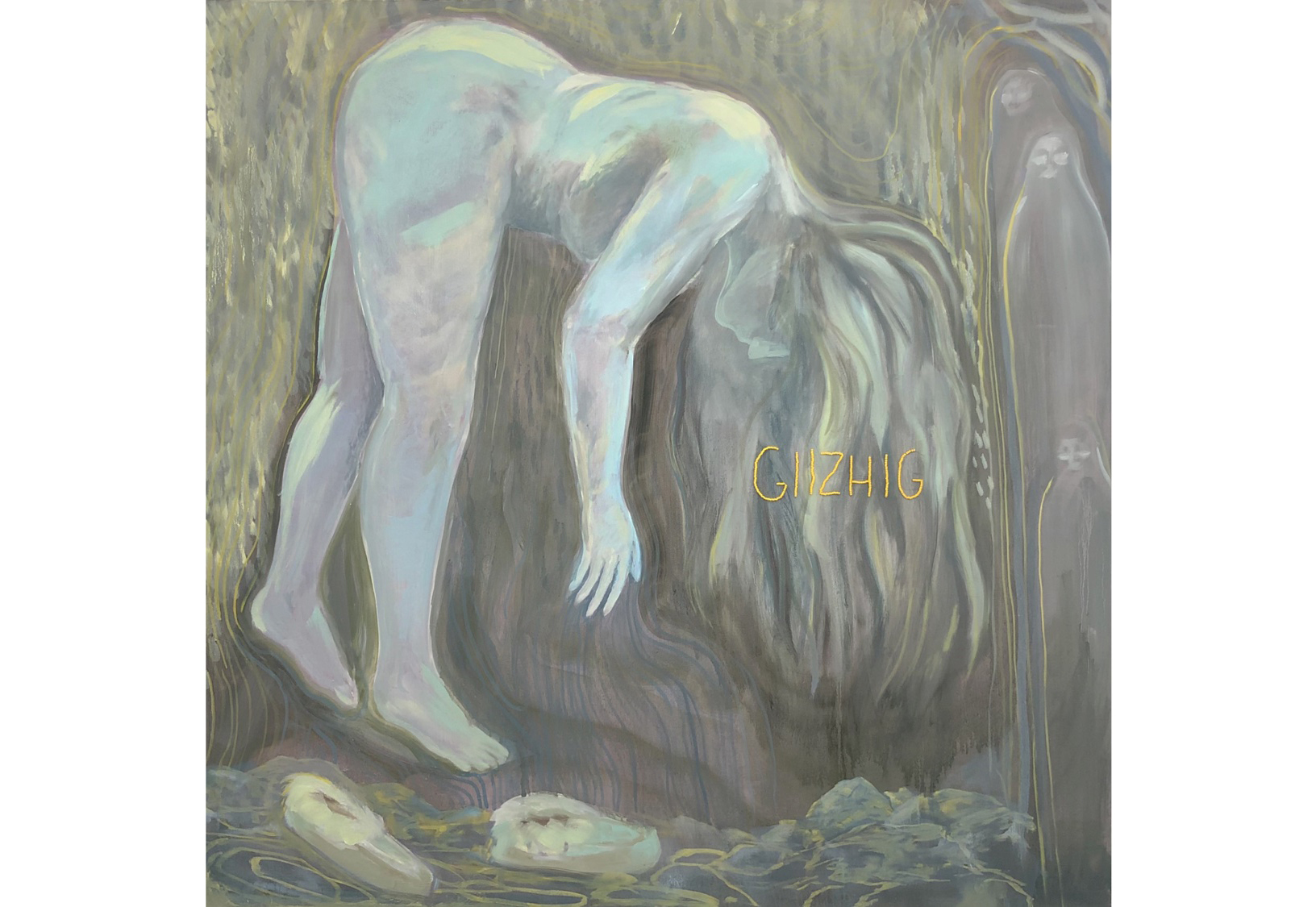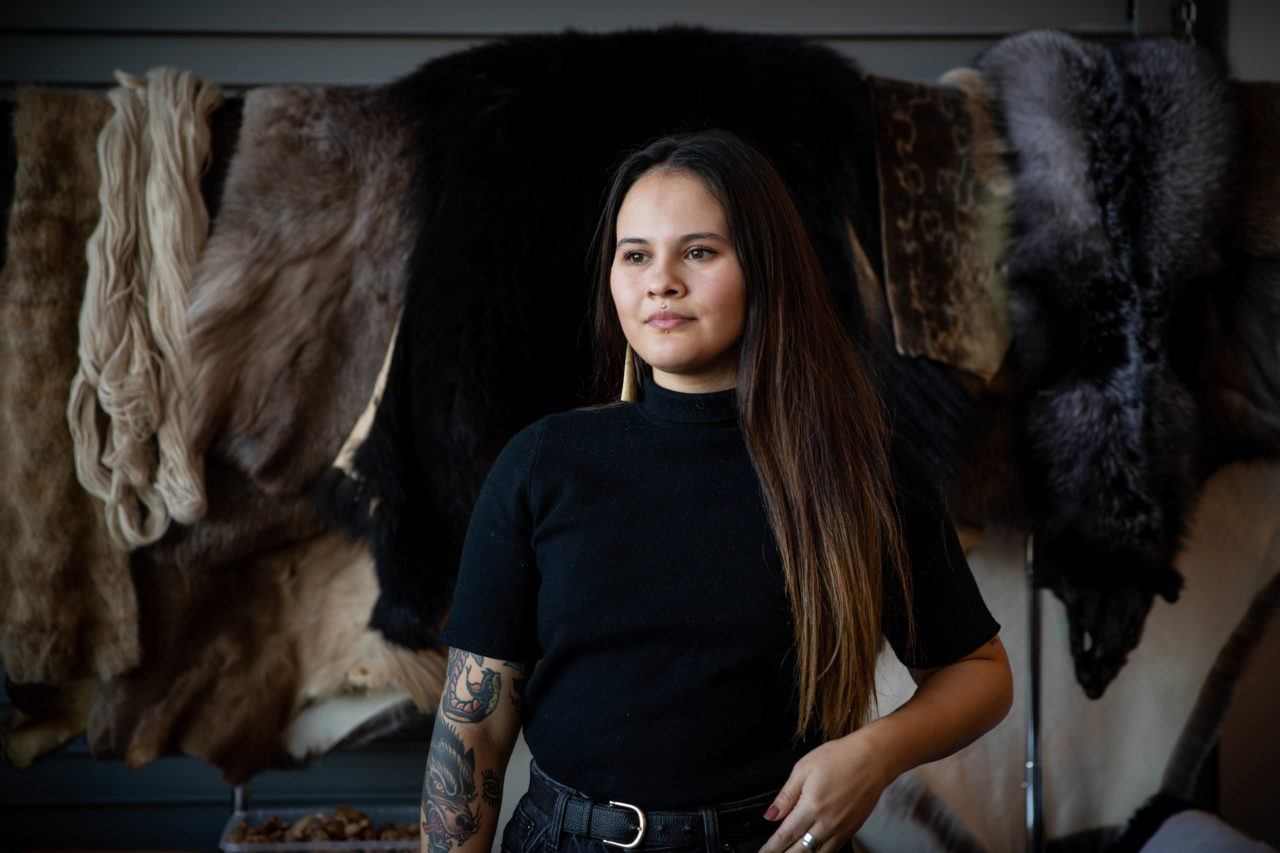
The artist and ECU student will have her work displayed for three months in the retailer’s flagship Vancouver store as part of a paid residency program in partnership with ECU.
The final iteration of a series of artist residencies at the Herschel Supply Company’s flagship Vancouver location will feature artist and ECU student Nevada Lynn.
Nevada will hang screen-prints of Douglas Fir tree rings from her series Douglas Fir/Srap7úl inside the glass-walled room within Herschel’s Gastown store. The images, which each include a land acknowledgement, can be seen through the sheer muslin on which they were printed, Nevada notes.
“By putting a land acknowledgement on each one of these pieces, I’m asking, how can we integrate these words into our everyday lives? And what do they actually mean?” Nevada says. “What’s my responsibility as a guest on traditional land? And what does that look like on a day-to-day basis?”
The Herschel Artist in Residence program was developed in partnership with both the Career Development + Work Integrated Learning office and the Advancement office at Emily Carr University with the goal of exhibiting the work of three emerging artists over the course of 2023 and 2024. The first edition was an open call for all ECU students; the second was specific to BIPOC students; the third was specific to Indigenous students. Karl Hipol was the inaugural resident, while Hannah Watkins was the second. Each recipient has their work exhibited for a period of roughly three months and receives a $4,000, no-strings-attached stipend.
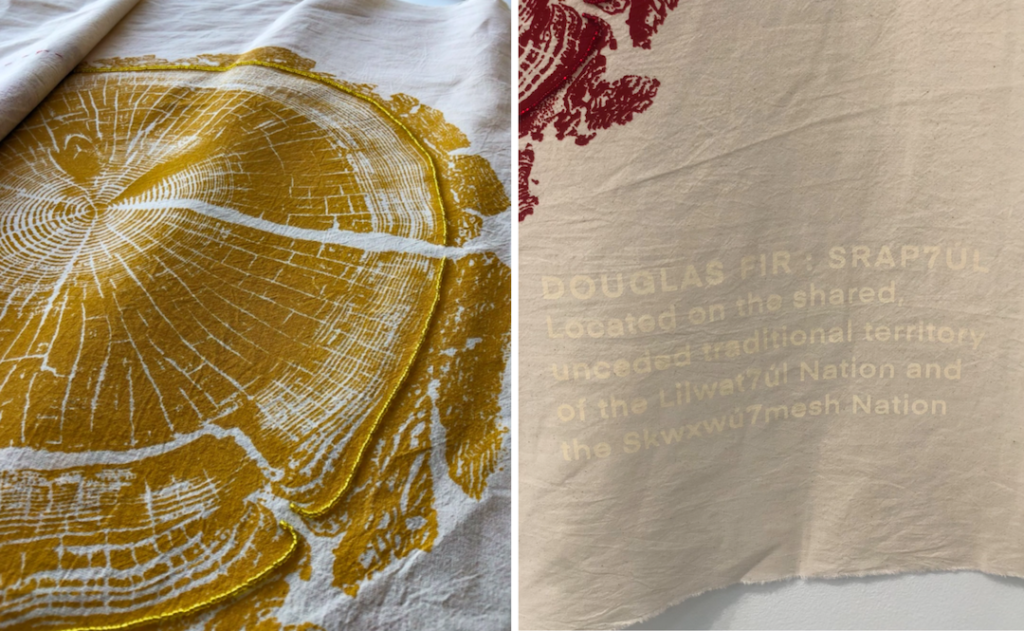
Nevada, who is of Cree Métis and European ancestry, says Douglas Fir/Srap7úl is rooted in her experience of living on Alpha Lake, on the unceded territory of the Sḵwx̱wú7mesh (Squamish) Nation and Lilwat7úl (Lil’wat) Nation. As part of a six-year recovery from a serious head injury, Nevada plunged into the lake’s icy waters for 365 days. As she healed and became more connected to the land, she began to wonder who its original caretakers had been.
Through her mother-in-law, she connected with a Lilwat7úl Elder residing in Mount Currie who had lived on a small island in the middle of the lake for a time as a child. During the visit, Nevada recalls asking her son what it was like when they lost their land.
“His answer was, ‘We never lost our land. It’s still our land,’” she tells me. “And then he told me the Whistler gondola runs through his uncle’s trapline. Displacement for Indigenous peoples is not ancient history. It’s still happening.”
As the final recipient of the 2023/4 Herschel residency, Nevada notes that Indigenous-specific funding can be “life-changing” for Indigenous artists.
“These artists are representing whole communities,” she says. “They don’t want to just be successful for themselves. They want to speak to issues that are really meaningful and urgent. That responsibility is driving their work. These kinds of grants are making a big difference in the lives of Indigenous artists, and Indigenous artists are affecting real change.”
Read the full article on ECU News.


